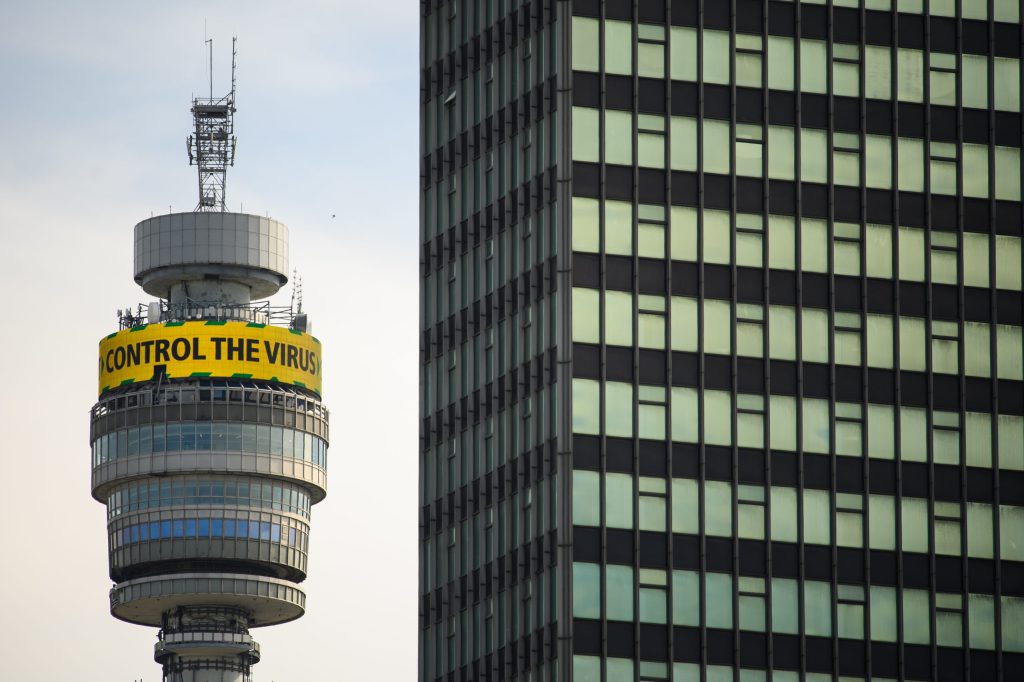In taking a position on an issue, most of us like to think that we accumulate evidence, consider the pros and cons, and then rationally come to a view that we’ll be willing to change if and when the evidence demands it. But it turns out that this is very much a minority way of going about things. The psychological evidence is very clear. What most people do is take a position very soon after being presented with an issue, and then accumulate evidence and reasoning to justify that position.
This goes some way to explaining the increasing polarization of views about coronavirus, which have been hardening over the last few weeks. In one camp we have the British government, their scientific advisers, and a large section of the population who reasonably trusted statements from authorities early on in the epidemic. They believe that measures such as lockdown and social distancing have helped control the virus, prevented a much worse death toll (at least if we only consider the effects of COVID-19) and that the measures remain absolutely necessary to keep it under control and prevent further outbreaks. They see everything through the prism of protection.
In another camp, we have those of a more contrarian turn of mind and people who perhaps waited a little longer to make their minds up. Because nothing was known about this virus, it is not surprising that evidence concerning its behavior changed very fast during the early stages of the epidemic. Many things that initially seemed to be true were quickly found not to be — for example, the lethality, the prevalence of asymptomatic infections, age susceptibility and the immune response to the virus. Contrarians soon found their suspicions confirmed, and those who waited to make up their minds were ready to see that this epidemic is simply not as bad as was initially feared. They found themselves agreeing with investment guru Sir John Templeton, who liked to say that the four most expensive words in the English language are ‘this time it’s different’.
A slow withdrawal from lockdown, quarantine, elaboration of social distancing, and fear of a ‘devastating’ second wave makes perfect sense to the first camp, while to the second camp this all looks like harmful and unnecessary delay.
There are three important asymmetries in this epidemic.
First, once a position has been taken, it takes a much higher level of evidence to reverse it, and this is particularly difficult to achieve when the evidence in question is negative (e.g. no second spike of infections).
Second, the first camp has coalesced around the levers of power, and in their determination to ‘protect’ have substantially stifled representation of alternative views — an action which may well be making things worse.
Third, evidence moved on swiftly from the time when the ‘protect’ camp took their position and actions, yet there is little indication of a serious review of approach by this group. In particular, they are still relying heavily for policy direction on the flawed crystal ball of epidemiological modeling, demanding certainties that it was not designed for and cannot provide.
One of the shroud-like outputs now being waved in front of the public is the idea of a second wave of infection. This is often referred to as ‘devastating’, the idea presumably being that it could be even worse than the first and that we had better keep on doing as we’re told if we want to be safe.
But this idea rests on crumbling assumptions. One is that the virus is actually being held in check by lockdown and social distancing rules. This seems questionable at best. There’s really no clear signal (apart from modeling, which doesn’t count) that these interventions have had any significant effects on the epidemic curves, either on the way in or the way out of these rules, in many different variants and in many different countries.
A second assumption is that, because a relatively low percentage of the population has had the disease, it will again be able to rapidly spread among us. But that depends, among other things, on us having no innate resistance to the virus. That was what the models originally assumed, and it looks like it’s just wrong.
There’s a type of immunological cell called a T helper cell (or CD4 positive T cell) that helps coordinate the immune response to viruses. A recent study looked at blood taken a year ago and found T helper cells reactive to SARS-Cov-2 in 40 to 60 percent of unexposed individuals, suggesting cross-reactivity between the COVID coronavirus and other viruses already circulating that cause the common cold.
The authors cautiously speculate that these reactive T cells may help to protect from SARS-Cov-2. But given our knowledge of other RNA viruses, the question we need to ask is why on earth wouldn’t they? If they’re reactive, they are highly likely to be protective. Cross-reactive T cells have been previously found to correlate with a less severe disease in H1N1 flu. And the important point is that already-present immunity could have a large effect on the spread and seriousness of SARS-Cov-2.
[special_offer]
It’s good to see new evidence moving the thoughts of at least one commentator who had previously been very cautious in his approach to the current epidemic. Prof Anthony Costello writes:
‘I have assumed that low antibody levels and a circulating virus means inevitable further outbreaks and a second winter surge. I’m sure we shall see outbreaks, as elsewhere, but do these cross-reactive T cells mean a second surge is less likely? Or is this over-speculation?’
One of the key things about science — obvious to its practitioners, but often obscure to outsiders — is that it is fueled by doubt, not certainty. When the ‘facts’ change (as they often do), and when original assumptions are qualified or overturned, then any scientist worth their salt re-examines and, if necessary, alters their conclusions. The presence of cross-reactive helper cells in maybe half the population means that ideas about a possible second wave must be rewritten. This finding must make a second wave less likely, probably much less likely. And the fact that there has been no ‘second wave’ (as opposed to isolated outbreaks) anywhere where lockdown has been released also fits this hypothesis. It may well also explain why the first wave didn’t infect much higher proportions of the population.
A very noticeable feature of the ‘protect; camp across the UK has been an absence of doubt in any of their pronouncements on this epidemic. This is not only not good science, it isn’t science at all. But the evidence is accumulating and the facts are changing. Over-caution can be just as harmful as too little. A full and open re-evaluation of this epidemic, where we are, and what we should do next is now both urgent and overdue.
This article was originally published onThe Spectator’s UK website.


















